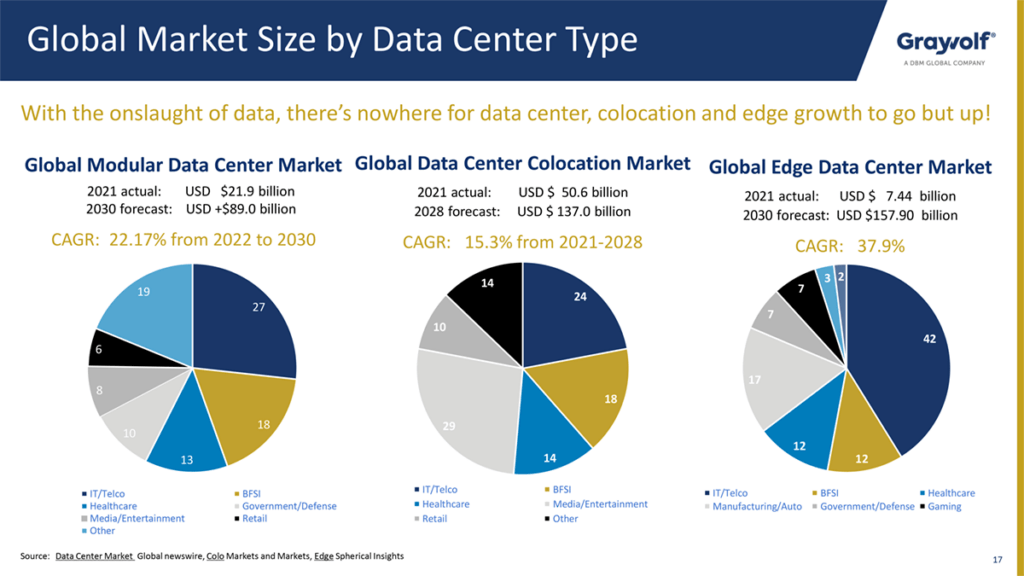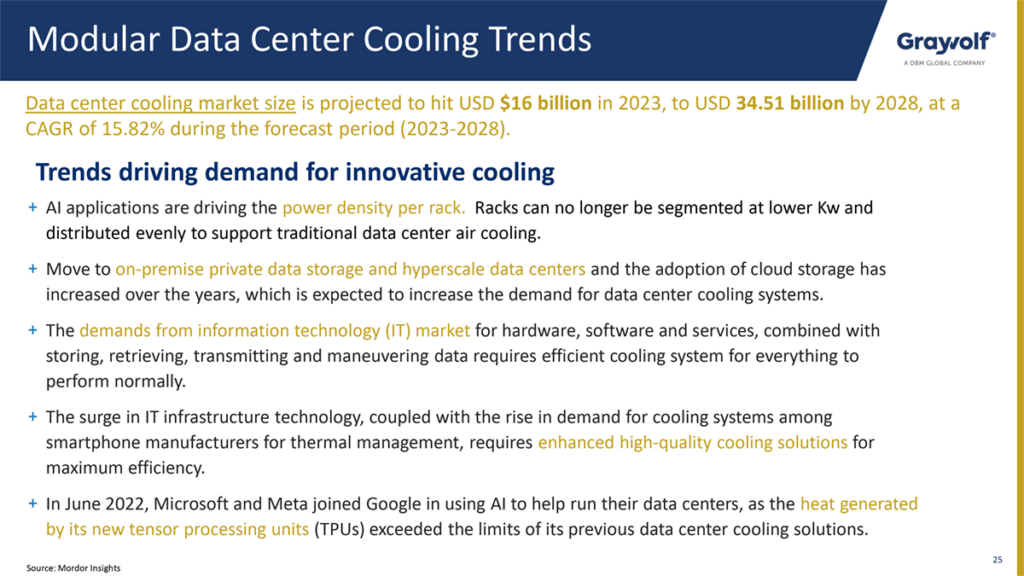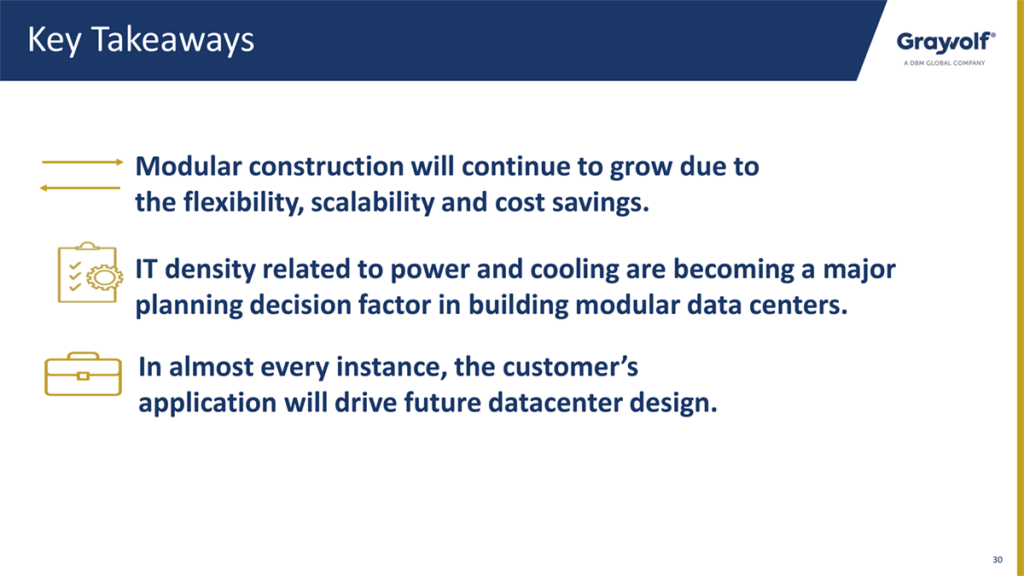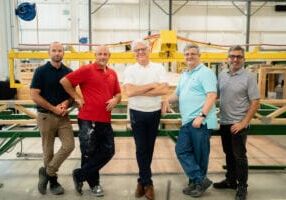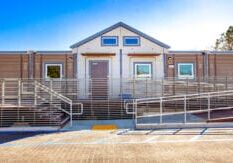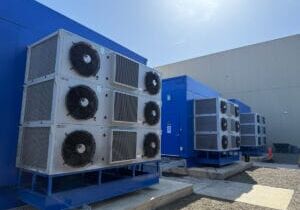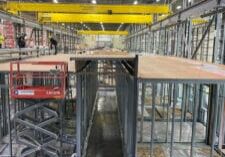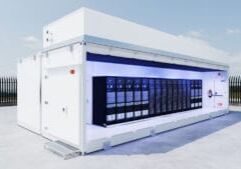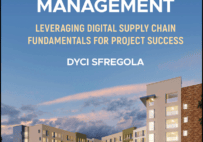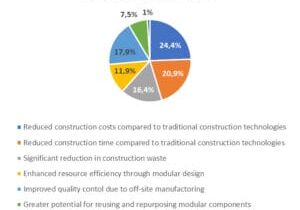GrayWolf: Building the Future of Modular Data Centers to Power the AI Revolution
The growth of artificial intelligence (AI) and cloud-based applications has created an urgent need for data centers capable of managing massive amounts of data. As businesses across industries increasingly rely on digital infrastructure to power their AI tools, the demand for data centers has skyrocketed. One company playing a key role in meeting this demand is GrayWolf - a construction company that has taken on the challenge of modularity by building and deploying scalable, efficient, and sustainable data centers and data center components for today’s tech-driven world.
With deep industry knowledge and a forward-thinking vision, GrayWolf is redefining how data centers are built and paving the way for new possibilities in the modular construction industry. Illuminating the intersection between traditional construction, modularity and technology, Ron Mann, the Senior Vice President at GrayWolf, shared insights into how their work is pushing the boundaries of modular construction and supporting industries that rely on data centers, AI, and cloud-based technology.
Ron has over 25 years of experience in product design, project development, and manufacturing. He helped develop one of the first eco-friendly containerized data centers in the early 2000s. His unique understanding of technology, data center design and modular construction helps him align client expectations, delivering sustainable solutions for data center, edge, cloud, colocation, and other customized modular construction at GrayWolf.
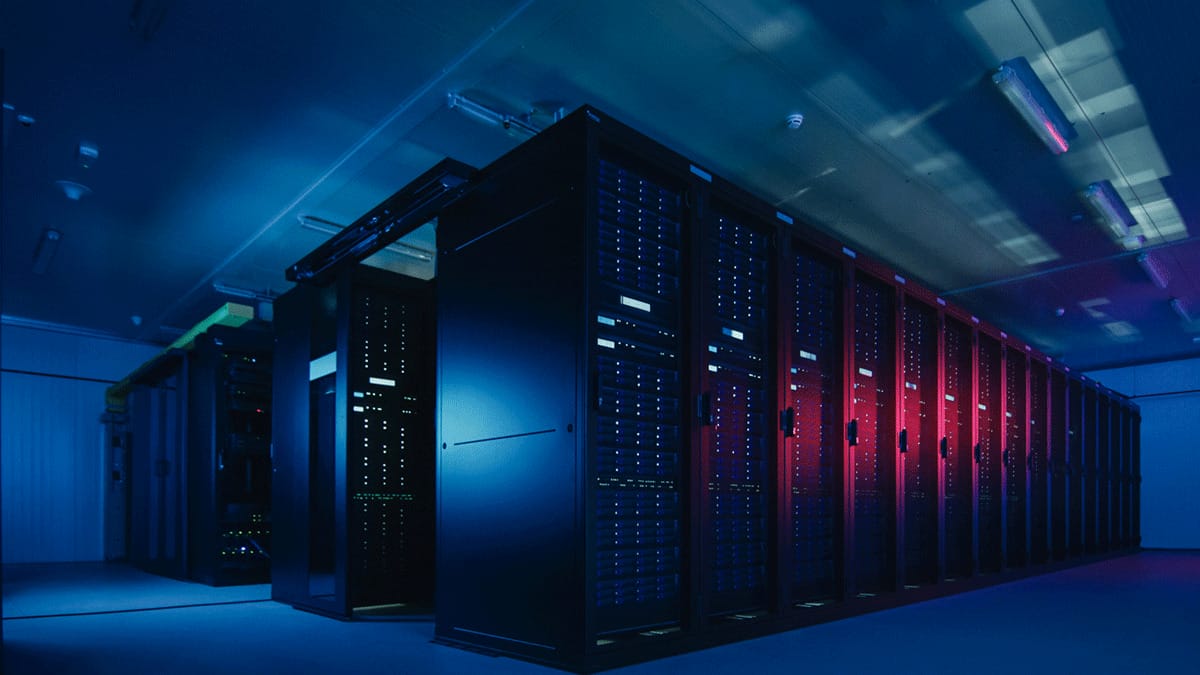
The Impact of AI on Data Center Infrastructure
The rise of AI has significantly changed the game for data centers. Traditional data centers that handled power demands averaging 10 kilowatts per rack now face challenges with AI workloads that require 50, 60, or even 100+ kilowatts per rack. Unlike other applications, AI cannot be distributed across multiple racks similarly, so concentrated power and cooling are now essential.
As AI becomes more prevalent, it’s pushing data centers to their limits, making retrofits or completely new builds necessary to handle these higher power densities. The cost of these upgrades is substantial, and many data centers now find themselves with underutilized space due to the excessive power requirements of AI applications.
The Shift to Modular Data Center Construction
As the demand for more efficient, scalable, and rapid deployment of data centers grows, there has been a significant shift in how these infrastructures are designed and implemented. One of the most notable trends in recent years is the rise of modular construction. This shift isn’t only about speed but also the practical and financial benefits that come with it, especially when considering higher IT power requirements.
“Data centers are growing quickly to keep up with increasing demand for data storage and processing so it’s no surprise they will test out new technologies and approaches for data center development and deployment, which means more innovation and yes, risk-taking to be able to support new IT technologies coming online. Data Centers need to scale, and they need to do it fast,” says Ron. “Traditional construction methods are often too slow and costly to meet the rising demand.”
Speed and Cost Advantages of Modular Construction
While speed is one of the primary reasons for the increasing popularity of modular construction, the benefits go beyond just quicker deployment. One of the key advantages of modular construction is optimization of capital investment. For example, if a company wants to build a 20-megawatt data center but only needs 10 megawatts immediately, modular construction allows them to build what they need now and expand later. This eliminates the issue of capital being tied up in underutilized infrastructure, which is a common challenge with traditional construction methods. Instead, a company can simply add modules or modular elements as IT capacity needs increase.
The Flexibility of Modularity: From Data Centers to Mechanical Plants
The versatility of modular construction is another key advantage. It’s not just data centers that can benefit from modularity; entire buildings, mechanical plants, and other complex infrastructures can be designed using modular principles. In some cases, structures are built with dozens of modules that fit together, providing a streamlined and efficient way to assemble large-scale facilities.
One example is constructing large white space areas for data centers, where multiple 40-foot by 11-foot units are assembled on-site to scale as needed for the application. This method is highly efficient and is especially popular with telecommunications companies, needing to locate infrastructure in unique or remote locations. The flexibility of modular construction allows it to be applied across multiple industries and multiple use cases, making it a versatile solution for different project needs.
Simplifying Compliance and Accelerating Project Timelines
Another significant benefit of modular construction is the potential to simplify building code and regulatory compliance. Since many modular units can be considered devices rather than habitable buildings, they can often bypass lengthy approval processes or AHJ scrutiny. “A UL2755 rating as an example, identifies a modular IT unit addressing safety, power distribution, structural integrity and transportation elements, which can accelerate deployment by reducing the number of approvals required,” explains Ron. “This is especially useful for IT modules, where speed and efficiency are paramount.”
By planning modular projects correctly, businesses can save both time and money. Pre-assembled sections, such as electrical, conveyance and plumbing systems, can be delivered to the site and quickly integrated with traditional site construction. This reduces the time needed for on-site labor trades, making them available in other areas, and streamlines the overall project timeline.
The Impact of Modularity on Energy Efficiency
One of the most notable differences between traditional and modular data centers especially in the lower rack power ranges, is the impact on energy efficiency. In a traditional data center, large areas are often cooled, regardless of the number of servers being used. This results in wasted energy, as excess capacity is cooled unnecessarily. If more power and cooling is required, the data center will most likely need significant retrofitting to gain efficiencies such as cold and hot aisle containment or other “spot cooling” upgrades.
Modular data centers, on the other hand, are designed to optimize power and cooling of specific racks or sections of IT at the required application densities. This targeted cooling not only reduces energy consumption but also makes for increased efficiency especially when coupled with other types of cooling technologies that are more easily added to a modular solution such as direct chip cooling.
GrayWolf Meets the Demands of Data Centers
With over 15 years of experience in the industry, GrayWolf is known for its customer-centric approach. Working closely with clients to build modularity into many facets of data center construction, they aim to understand each customer’s specific needs and goals, ensuring that each modular solution is tailored to meet those requirements. GrayWolf offers end-to-end services that help make the modular construction process seamless - from design/design assist to build, factory integration and final assembly and commissioning in the field.
“Every client has unique needs, whether it’s cooling systems, power requirements, structures, or scalability,” says Ron. “We provide modular solutions at whatever level businesses need. Modularity lets us meet customers where they are today and allows them to scale as they grow. It’s all about building with the future in mind.”
By delivering these tailored solutions, GrayWolf is at the forefront of supporting AI’s growth and ensuring companies can expand their infrastructure to meet the demands of today and tomorrow. “We’re building the foundation for what AI can do, with data centers that grow alongside businesses’ evolving technology needs,” says Ron.
Leading the Charge in Innovation
One of the most compelling aspects of GrayWolf’s modular solutions is how they intersect with broader trends in innovation. As Ron stated earlier, data centers are growing quickly to keep up with increasing demand for data storage and processing, and it’s no surprise they will test out new innovative technologies. This means more risk-taking of new modular designs and approaches that will also have broad applications in other markets and industries. GrayWolf’s commitment to embracing these innovations is central to its long-term strategy. This not only benefits the company but also creates opportunities to influence other sectors that will inevitably adopt modularity.
“Being at the forefront of everything that’s happening in the world... for the next few years, if not more,” Ron remarked, “is a testament to GrayWolf’s leadership in driving change. Our expertise in modular design is an example of how companies can challenge and complement traditional methods to create new, sustainable solutions for the future.”
Passion Meets Purpose
Ron and his team at GrayWolf are not just participants in the modular revolution; they are dedicated pioneers. “I’m passionate about it,” Ron shared, “I think it is one of the last emerging areas of innovation as you are seeing the combination of the best of product development and manufacturing merging with the best of site construction and integration with solutions that actually make a difference.”
That passion fuels GrayWolf’s vision for the future, where they aim to create meaningful change in how buildings are designed, constructed, and operated. “How many times do you get to be in an industry where you can actually help create a new way of doing things?” Ron asks. This unique opportunity to innovate motivates the entire team at GrayWolf, driving them to explore uncharted territory in modular solutions.
A Vision for the Future of Modular Construction
GrayWolf is not just focused on the present. Their sights are set on the future, where they aim to be leaders in transforming the construction industry through modular innovation. As Ron eloquently put it, “We just have a lot we can do. So, it’s a great opportunity.”
With their deep expertise, GrayWolf is committed to offering modular solutions across industries, helping to shape the future of construction. As modular construction continues to grow in importance, companies like GrayWolf will play a crucial role in driving sustainable, flexible, and efficient building practices for years to come. “Data centers are just the beginning,” Ron says. “Our goal is to expand modularity into all industries. We’re not just here to build data centers - we want to help reshape how industries approach construction and infrastructure.”
“We see a future where modularity becomes the standard, not the exception,” Ron states. “It’s faster, more efficient, and more sustainable. As industries like AI continue to grow, they’ll need infrastructure that can grow with them. That’s where modular construction comes in.”
About the Author: Karen P. Rivera is a freelance writer and editor with a passion for storytelling. She is a former United Nations-based reporter, with experience covering international breaking news, venture capital, emerging healthcare tech, and the video game industry.
More from Modular Advantage
Resia: Breaking All the Rules
Resia Manufacturing, a division of U.S.-based Resia, is now offering prefabricated bathroom and kitchen components to industry partners. Its hybrid fabrication facility produces more precise bathroom and kitchen components (modules) faster and at lower cost than traditional construction. Here’s how Resia Manufacturing does it.
How LINQ Modular Innovates to Bring Modular To The Market in the UAE and Beyond
LINQ Modular, with an office and three manufacturing facilities in Dubai, is a modular firm based in United Arab Emirates. The company is on a mission: to break open the housing and construction markets in the Gulf Cooperation Council (GCC) area with modular.
ModMax: Redefining Modular Construction with Confidence and Precision
ModMax was born out of frustration—frustration with five persistent pain points in modular construction: Permitting bottlenecks. Production delays. Rigid designs. Disconnect between “the office” and the field. Lack of transparency and communication.
LifeArk: Disaster-Resilient Housing from Recycled Plastic and 100-year-old Technology
Wee compares LifeArk’s housing units to Yeti coolers, as they are built similarly. Each component takes 15 to 20 minutes to manufacture, has an R-value of 40, and includes molded slots and chases for wiring, plumbing, fire sprinklers, and other utilities.
Building the Future of Modular Edge Infrastructure
The edge data center market is expanding rapidly, driven by the surge in AI workloads, IoT adoption, and the need for localized compute power. In these environments, sustainability, scalability, and reliability are non-negotiable. Cooling is among the most complex challenges for operators—and one of the most decisive factors in long-term success.
Accelerating Light-Gauge Steel Construction: A Semi-Automated Digital Workflow for Off-Site Projects
For construction professionals, the message is clear. By adopting semi-automation and digitalization, companies can deliver projects faster, more accurately, and more profitably, while also building stronger collaboration across teams. The approach is not about replacing people with machines, but about empowering people with better tools and processes.
Why Modular Data Centers Are Gaining Momentum
Artificial intelligence, high-performance computing, and edge applications push the limits of traditional “stick-built” data centers. They take years build, often struggle with high density workloads, and aren’t optimized for deployments near end users. Modular data center platforms are purpose-built to address these challenges, offering flexibility and scalability to adapt to evolving technologies, while opening new opportunities for the modular construction industry.
Supply Chain Innovation in Action: 5 Habits Every Modular Leader Should Practice
By applying these principles to supply chain practices — collaborative planning, strategic procurement, scenario modeling, digital tools, and transparent forecasting — construction leaders can build value chains that are not just efficient and agile, but truly innovative.
Exploring the Role of Modular Integrated Construction (MiC) in Advancing Circular City Principles – A Survey of Stakeholder Perspectives
The survey findings highlight the significant potential of Modular integrated Construction (MiC) in advancing the development of circular cities. By reducing costs, accelerating construction timelines, and minimizing waste generation, MiC offers a promising approach to sustainable urban development.
The Use of MS POLYMER™-Based Sealants and Adhesives in Modular Building
These products combine flexibility and elastic recovery with excellent adhesion to different substrates and have already shown their usefulness in traditional construction. Now it’s time for them to be put to use in the modular construction industry.

